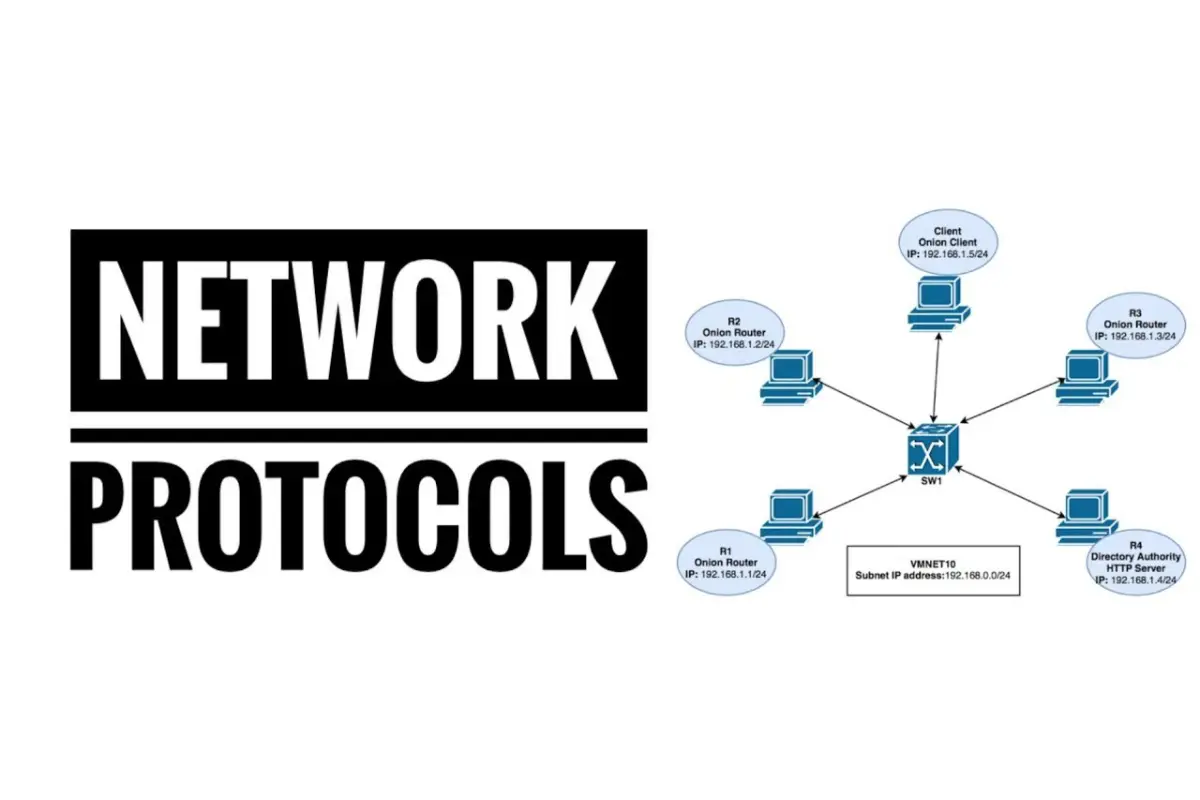Network protocol are standards that enable two or more points in a network to share and transmit information. This set of rules can be defined from well-defined rules, syntax, a synchronize communication between the network members, and connection recovery methods for possible errors that it may have.
Table of Contents
How they Work and What they are
A network protocol can make up of several layers. Thus, a task assigned to the network can be divided into smaller and simpler tasks, and then each function (layer) of the protocol cooperates to carry out the main task. The expression “protocol set” refers to the group of protocols collaborating to carry out the job. One of these sets is the TPC/IP .
OSI Scheme
One of the schemes on which network protocols are based is the Open Systems Interaction Model or OSI (for its acronym in English), created in 1983 by the International Organization for Standardization. This model consists of 7 layers :
- Physical layer: It is where the network’s media, structure, and also physical architecture can be organized.
- Data Link Layer: Concerned with the reliable transfer of information across the physical layer.
- Network Layer: Ensures connectivity and establishment of circuits between two points in the network.
- Transport layer: Works on the efficient transfer of data between two points in the network, regardless of whether they are directly connected, and the sustainability of information flow.
- Session layer: It deals with the control and maintenance of the connection established between two network points.
- Presentation Layer: This allows all network members to access certain information or files, regardless of whether they represent the data differently.
- Application layer: Allows users and applications access to the other layers to transfer information.
TCP/IP Scheme
On the other hand, the Transmission Control Protocol or TPC (for its acronym in English) is also a schematic model of a network protocol, which is also widely implement. The main difference with the OSI model is that it consists of only 4 application layers:
- Connection layer: It focuses on data transmission between network users and defines how these should be transmit.
- Internet layer: Provides connection to the Internet and moves packets from a sender to its recipient.
- Transport layer: Transmits the processes from a device and initializes them at another point in the network; it is also concerned that the flow of information is efficient and stable. It also notifies users of a successful data transmission or informs them if there has been an error during the transfer.
- Application Layer: Interacts with application programs to establish communication, identifies other network members and synchronizes communication within the network.
Types of Network Protocol
The application of network protocols depends on the devices that make it up and also the problems they intend to solve. A vast majority of these are cited below:
Communication Protocol
Allows communication between network members. The best-known communication protocols use both analogue and digital signals and are implement for both file transfer and internet access.
- Automation is use to automate certain processes like synchronizing smart devices or cloud processes.
- Instant messaging consists of exchanging text messages on mobile phones and computers.
- Routed: Protocol to establish a connection between a router and the devices on a network.
- Bluetooth: This protocol is responsible because we can have all devices interconnected today through Bluetooth technology .
- File Transfer: As its name suggests, it allows you to share files between network members.
- Internet Protocol: Mostly known as IP (from the English Internet Protocol ), it allows the transfer of information through the Internet.
Security Protocol
It ensures that the information passing through the network can only be manipulate by its users; besides, only they have access to the network. These are some of the most used:
- Encrypted: Encrypts the information circulating through the network and establishes a password system to access it.
- Authentication: Establishes a system where the identity of all devices and also users who want to join the network is verified.
- Transport: Ensures the integrity and security of the information from one point to another in the network.
Network Manager Protocol
It is concerned that the network works optimally through procedures that involve switches, routers and also servers. These are implement in all networks, of which we can mention:
- Connectivity: Establishes and maintains a stable connection between all network members.
- Link aggregation: This allows you to combine multiple connections between two devices into a single link, strengthening the relationship and keeping it stable if one of the networks goes down.
- Troubleshooting: This allows the network administrator to detect connection problems and perform quality checks on the connection.
Which are the Most Used Protocols
In addition to the Bluetooth, Router, Encryption and IP protocol, there are other protocols that are use on a daily basis:
- HTTP: Acronym for Hypert Text Transfer Protocol is use to transfer information through HTML, XHTML, and other files of the exact nature within the Internet.
- SSH: From the English Secure Shell, it allows remote access to servers through a channel where all the information is encrypt.
- SMS: Short Message Service a protocol that allows the exchange of alphanumeric messages between 140 and 160 characters.
Where are they Implemented and Use?
Without network protocols, LAN, WAN connections , and the Internet itself could not be a reality. These use several protocols cited in this article to provide a smooth, stable, and also secure network experience. They can also implemented in device connectivity via Bluetooth and Wi-Fi connections: since the router has its protocol and uses others for an integrated experience.
conclusion
Network protocols are rules, contracts, and data structures that dictate how devices exchange data across networks. In other words, network protocols can be link-to languages that two devices must understand for seamless data communication, regardless of their infrastructure and design disparities.

